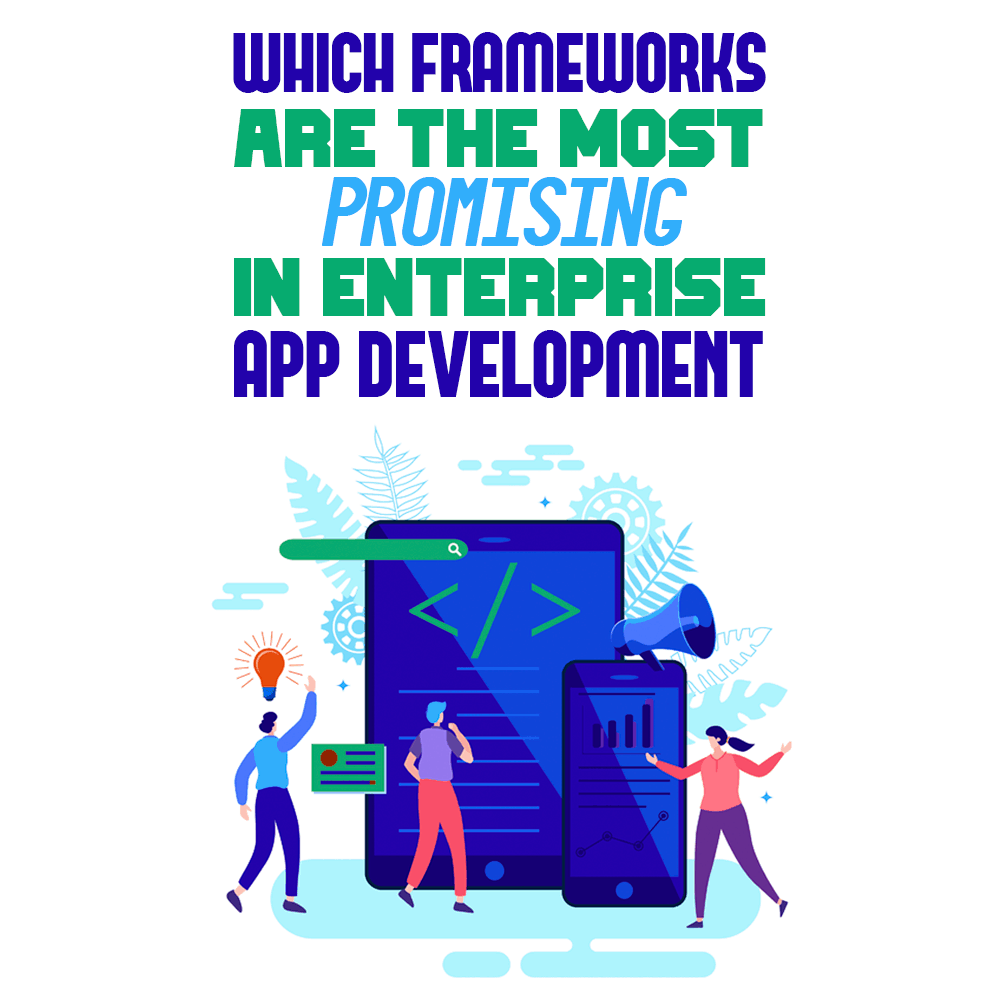 It’s hard to know where to start when it comes to choosing the right framework for developing your app. It’s harder when you know the framework you choose makes a big difference in how your app turns out. How do you make an informed decision then?
It’s hard to know where to start when it comes to choosing the right framework for developing your app. It’s harder when you know the framework you choose makes a big difference in how your app turns out. How do you make an informed decision then?
Cross-platform app development frameworks would witness more adoption as companies look to cut costs and lower development life cycles.
Facebook’s React Native is the most preferred framework for building cross-platform apps. Still, although Google’s Flutter is relatively new, it is soaring in popularity.
However, even with cross-platform frameworks, performance and UI differences can be obvious. Many companies, in prioritizing omnichannel experiences, would want to close such disparities.
Therefore, the concerns are not limited to technical errors, but a synchronized experience. Moreover, cross-platform frameworks hope to enable smoother integration with the cloud environment and support more nonmobile environments.
This article explores recent innovations in four main frameworks: Ionic, Xamarin, React Native, and Flutter. The key focus will be on explaining why Flutter is best positioned for future enhancement in app development, even though the others are developing rapidly too.
Ionic
Ionic is like Flutter in the sense that from the outset, each of the two frameworks had a broad focus for app development beyond mobile.
However, unlike Flutter, Ionic is based on open web standards and technologies, which creates a somewhat free-standing ecosystem, including its use of a nonstandard language, Dart. Moreover, it’s powered by HTML, CSS, and JavaScript—the languages of the web. The openness of Ionic’s development standards makes it flexible for use on different platforms and with different technologies.
Therefore, in a way, Ionic can be said to be more future-proof. Since it uses web components, it is compatible with any JavaScript framework such as Angular, React, Vue, etc. That means, notwithstanding the reigning JavaScript frameworks at any particular time, Ionic works.
Ionic now champions a technology it calls Web Native, powered by its native runtime, Capacitor 3.0. Described as the future of mobile app development, Ionic aims to boost the performance and functionalities of web apps running on mobile, desktop, and web.
Ionic wants to establish its Capacitor as the standard for web developers building mobile apps with this innovation. Capacitor 3 comes with reduced app bundle sizes for easier deployment as well as increased testing speed.
More so, Capacitor community members on GitHub are making huge investments to expand projects. With such a strong support base, one can tell that Ionic will remain among the top frameworks for some time.
Xamarin and .NET 6
Xamarin.Forms is well-known as a framework for building mobile applications. This year, however, it’s evolving into .NET Multi-platform App UI (MAUI), which is Microsoft’s cross-platform app development library.
With MAUI, .NET also joins the list of development frameworks extending support from mobile to other platforms, particularly desktop and web and cloud.
Although Xamarin has always been part of .NET in a way, Microsoft now wants both to be one entity, sharing the same class library, and providing a consistent experience. Therefore, Xamarin.Android and Xamarin.iOS became .NET for Android and .NET for iOS, respectively.
Hence, .NET MAUI focuses on support for Universal Windows Platform (UWP) desktop apps (Xamarin.Forms had been mobile-focused) as well as macOS.
The new .NET MAUI experience further unifies the cross-platform experience by introducing Single Project, enabling developers to manage visual aspects such as fonts and images from one platform instead of jumping from one operating system to another.
This is contained in the .NET unification vision, which began with .NET 5 and has continued unto the latest .NET 6.
Apparently, according to Microsoft, .NET MAUI provides “one project targeting multiple platforms and devices, one location to manage resources such as fonts and images, and multi-targeting to organize your platform-specific code.”
However, every other framework, particularly Flutter, already puts in work to integrate more operating systems and devices into their structure. Hence, Microsoft’s unification idea is not particularly novel.
React Native
Last year, Shopify decided to build all their new mobile apps using React Native, switching from native development.
The news came just as React Native introduced a new architecture that included a new native module system called TurboModules. The new architecture enhances the type-safety of direct calls between JavaScript and native by simplifying the bridge.
CodeGen powers this new architecture, improving the compile time for projects and resulting in “smaller code size and faster execution.” TurboModules also adds new extensions.
Nonetheless, the most talked-about aspect of the re-architecture is perhaps Fabric, which only represents the UI layer. Fabric enables concurrent threading and async rendering. It resolves problems such as rendering delays, animation frames dropping, and app lags while also reducing memory consumption.
All these are based on the JavaScript Interface (JSI), which enables better coordination with the JavaScript engine when writing C++ code.
Facebook also plans to make React Native support other operating systems and devices, such as VR headsets and IoT devices, progressing with IoT engineering. This finds useful application in the connected automotive industry, whose market size is expected to reach $48.77 billion by 2027. With this, React Native would be far more relevant, and to a wider range of industries, in the future.
Flutter

Flutter is quite easy to use, and beginner developers have found it simpler to build apps on Flutter than other frameworks. Thus, it is ideal for the development of a minimum viable product (MVP) for market research purposes.
Being the first-choice framework for many current beginner app developers already means that Flutter is best positioned for breeding the next generation of app developers.
Flutter has been evolving from a mobile-first app development framework, adopting other platforms including web, desktop, and embedded usage. Moreover, in a similar fashion to React Native, Flutter aims to allow “creative inspiration (rather than target platform) to be the only limiting factor.” Some of this expansion was achieved with Flutter 2.
The introduction of Flutter 2.2, in particular, focuses on improving performance issues. For instance, it makes null safety the default option for all new projects, thus easing the debugging process and enhancing performance.
Flutter is also making some exciting partnerships to expand the use of Flutter beyond mobile. Toyota recently announced that its future vehicle infotainment systems would be Flutter-powered, using Embedded API.
Flutter’s embedded support generally extends to IoT devices such as a refrigerator or a thermostat even when the device uses a different OS environment.
The Most Promising of Frameworks
Emerging cross-platform app development frameworks are driving innovation in cost-effectiveness, performance, user experience, and cloud integration. And all the frameworks discussed in this article have promising features.
Ionic uses the “natural” languages of the web (HTML, CSS, and JavaScript); Xamarin and .NET are redefining the cross-platform development experience; React Native is expanding to innovative industries such as IoT.
However, Flutter stands out. Even though it is based on an unusual language, Dart, Flutter is very easy to learn and has become the starting point for many app developers. Flutter has also evolved seamlessly from a mobile-first framework to providing more active support for other operating systems and new technologies.
Therefore, it is not farfetched to consider Flutter the most promising of these frameworks even while acknowledging innovations from the others.
